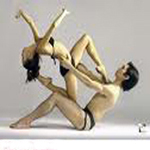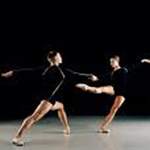Ballet dance as a backbone for many other styles of dance, as many other dance genres are based on ballet. Ballet is based on techniques that have been developed over centuries. Ballet uses music and dance to tell stories. Ballet dancers have the ability to transport an audience to another world.
Ballet came out in late 15 century Renaissance court of Italiyan style , as a dance interpretation of fencing, and additionally urbanized in the French court from the time of Louis XIV in the 17th century. Consequently, after 1850, ballet flourished in Denmark and Russia dance. It was from Russia that it returned to Western Europe and later the globe.
These short dances grew in fame and importance until they became a form of theater in their own right, escorted by a standardization of movements and defining of other stylistic meetings. As the years passed, Russia dance became the international center of ballet, merging the strength and passion of Italian style with the softness and fluidity of the French school. The Ballet Dance is an established Paris as the capital of the ballet world. King Louis XIV, who ruled France during the late 1600's and early 1700's, strengthened that leadership. Louis greatly enjoyed dancing. He took part in all the ballets given at his court, which his nobles performed, but stopped after he became fat and middle-aged. In 1661, Louis founded the Royal Academy of Dancing to train professional dancers to perform for him and his court.

is the most formal ballet style which adheres to traditional ballet technique. Based on the origin, there are various Ballet styles: Russian ballet, French ballet, and Italian ballet. The most well-known styles of ballet are the Russian, the Italian, Balanchine Method or New York City Ballet Method. The pointe shoes were regular ballet slippers that were darned at the tip. It would allow the girl to stand on her toes to appear weightless. Classical ballet is defined by three rules : - everything is turned-out - when the feet are not on the floor, they're pointed - when the leg is not bent, it's stretched completely.

Neoclassical ballet is a ballet style that uses traditional ballet but less rigid than classical ballet. The dancers dance at extreme tempos and perform more technical feats. Spacing is more modern and complex than in classical ballet. It is the classical ballet style of the 20th century exemplified by the works of George Balanchine. It also draws the technique of 19th century Russian Imperial dance, but strips it of its detailed narrative and heavy theatrical setting. Although there are more organizations, the structure is a defining characteristic of neoclassical ballet.

Contemporary ballet is a dance form influenced by classical ballet and modern dance. Although it allows a greater range of movements, it takes its technique from classical ballet and the concepts from the ideas of modern dance. George Balanchine was the first pioneer of contemporary ballet and the dancer who danced briefly for Balanchine was Mikhail Baryshnikov. Baryshnikov's worked with various modern choreographers like Twyla Tharp and created some distinct modern movements with pointed shoes and classically-trained dancers for contemporary ballet.

Romantic Ballet is a ballet dance style in which the ideas of Romanticism influenced the creation of ballets. This era happened from early to the mid 19th century at the Théâtre de l'Académie Royale de Musique and Her Majesty's Theatre. Romantic Ballet had a slow decline. Saint-Léon's, ballet Coppélia is the last work of the Romantic Ballet. The works of Romantic Ballet focused on conflicts between man, nature and the society. The decline of male dancer and the rise of ballerina started in this era. Ballerina became the central part of ballet.









